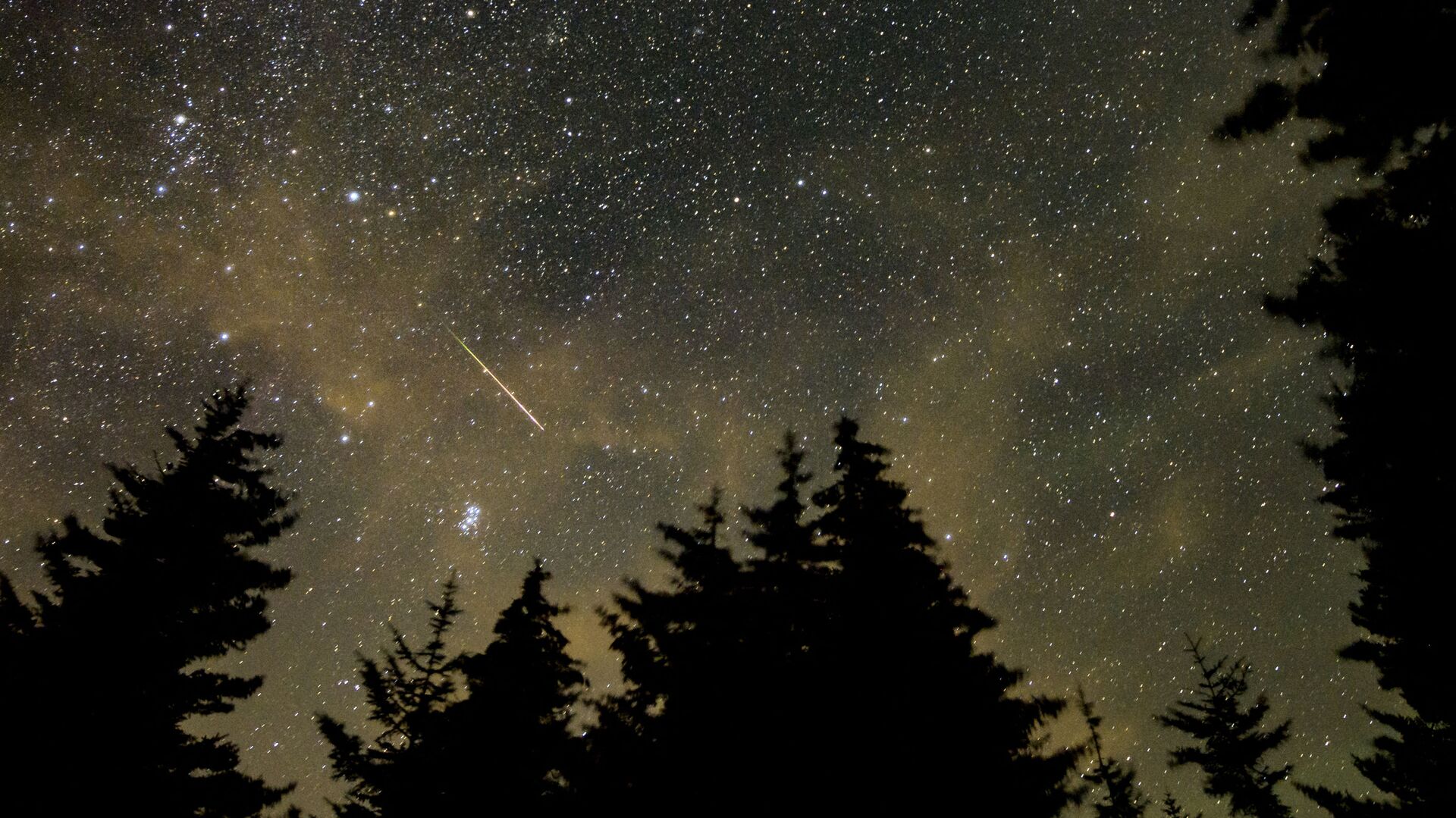https://sputnikglobe.com/20230811/eyes-to-the-skies-perfect-conditions-to-view-the-perseid-meteor-shower-this-weekend-1112524331.html
Eyes to the Skies! 'Perfect' Conditions to View the Perseid Meteor Shower This Weekend
Eyes to the Skies! 'Perfect' Conditions to View the Perseid Meteor Shower This Weekend
Sputnik International
Our Earth travels through the trail of debris every summer, however this August viewing conditions will be 'perfect'.
2023-08-11T03:47+0000
2023-08-11T03:47+0000
2023-08-11T03:46+0000
beyond politics
meteor
meteor shower
meteor shower
perseid meteor shower
astronomy
astronomy
astronomy
science & tech
shooting star
https://cdn1.img.sputnikglobe.com/img/07e5/08/0c/1083588662_0:229:2827:1819_1920x0_80_0_0_94a40ed31a7463f6217505ca391835c8.jpg
The Perseid meteor shower is coming to skies near you, and viewing conditions are forecasted to be superb by week's end, with some researchers reportedly saying this will be the one of the best years for viewing the 'shooting stars.'This year, the Perseid meteor shower will be most active between July 17 and August 24; however, viewing will be best this weekend on August 13 at around 04:00 EDT (0800 GMT).And those who are prepared to stay up late, or even all night, can begin watching meteors after evening twilight ends on the 12th, at which point the showers should be “radiant,” when the constellation Perseus (the shower’s perspective point of origin) has risen about the northeastern horizon, per one outlet.Anyone living in the Northern Hemisphere should be able to view the brilliant show, and as long as they are viewed in dark areas, a person can expect to see one meteor per minute. No special tools, such as binoculars or telescopes are needed to witness the showers; in fact, they are best viewed by the naked eye."The prime time will be just before sunrise on August 12 or 13. If you're observing in the evening, start after 10 p.m. and look towards the east or northeast. Finding the Big Dipper can be a guide to spotting some Perseids,” adds Denis Vida, of Western University in Canada.The “shooting stars” will occasionally appear as small, quick rays, while others may be brighter, and can stream the sky for several seconds, leaving behind a brief, glowing trail. Some meteors from the Delta Aquariid and Kappa Cygnid may appear as well, but it is possible to differentiate these meteors from Perseids by looking at their tracks: if the meteor's trail does not lead to the Perseus constellation, then it is an interloper.The meteors are simply pieces of debris, no bigger than a pea, which hit the atmosphere at an incredible rate of roughly 37 miles per second, and glow as they burn. Their origin is the Comet Swift-Tuttle, which shed a trail of debris that our Earth passes through every summer.
Sputnik International
feedback@sputniknews.com
+74956456601
MIA „Rossiya Segodnya“
2023
News
en_EN
Sputnik International
feedback@sputniknews.com
+74956456601
MIA „Rossiya Segodnya“
Sputnik International
feedback@sputniknews.com
+74956456601
MIA „Rossiya Segodnya“
science, astronomy, shooting stars, meteor shower, perseid meteor shower
science, astronomy, shooting stars, meteor shower, perseid meteor shower
Eyes to the Skies! 'Perfect' Conditions to View the Perseid Meteor Shower This Weekend
The Perseid meteor shower typically peaks in mid-August and is considered “the best meteor shower of the year,” per NASA. With anywhere from 50 to 100 meteors seen every hour, the shooting stars leave behind long wakes of light and color as they pass through the atmosphere.
The Perseid meteor shower is coming to skies near you, and viewing conditions are forecasted to be superb by week's end, with some researchers reportedly saying this will be the one of the best years for viewing the 'shooting stars.'
This year, the Perseid meteor shower will be most active between July 17 and August 24; however, viewing will be best this weekend on August 13 at around 04:00 EDT (0800 GMT).
And those who are prepared to stay up late, or even all night, can begin watching meteors after evening twilight ends on the 12th, at which point the showers should be “radiant,” when the constellation Perseus (the shower’s perspective point of origin) has risen about the northeastern horizon, per one outlet. Anyone living in the Northern Hemisphere should be able to view the brilliant show, and as long as they are viewed in dark areas, a person can expect to see one meteor per minute. No special tools, such as binoculars or telescopes are needed to witness the showers; in fact, they are best viewed by the naked eye.
"Conditions this year couldn't be more perfect," said Diana Hannikainen, an editor of an astronomy magazine. "The waning crescent moon, which is only 8% illuminated, rises in the wee hours of the morning on August 13th and won't interfere with viewing. The main thing that could hamper enjoyment of the spectacle would be clouds or light pollution."
"The prime time will be just before sunrise on August 12 or 13. If you're observing in the evening, start after 10 p.m. and look towards the east or northeast. Finding the Big Dipper can be a guide to spotting some Perseids,” adds Denis Vida, of Western University in Canada.
The “shooting stars” will occasionally appear as small, quick rays, while others may be brighter, and can stream the sky for several seconds, leaving behind a brief, glowing trail.
Some meteors from the Delta Aquariid and Kappa Cygnid may appear as well, but it is possible to differentiate these meteors from Perseids by looking at their tracks: if the meteor's trail does not lead to the Perseus constellation, then it is an interloper.
The meteors are simply pieces of debris, no bigger than a pea, which hit the atmosphere at an incredible rate of roughly 37 miles per second, and glow as they burn. Their origin is the Comet Swift-Tuttle, which shed a trail of debris that our Earth passes through every summer.


